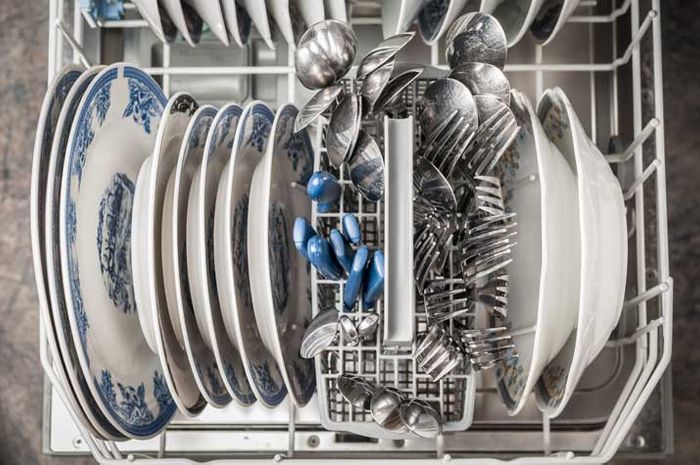
Dishwashers are a great labor-saving device, but washing dishes by hand may seem like a better solution when the unit fails to get your dishes clean. Fortunately, you can improve the efficiency of your dishwasher by following several simple steps. This starts with upgrading to an Energy Star unit if you don't already have one. Even though they use less water, Energy Star dishwashers perform significantly better than others do.
Load the Dishwasher Right
Scraping large food pieces off dishes before placing them in the dishwasher allows the unit to do a better job of cleaning. It's also most efficient to load the dishwasher completely full without overcrowding it. Placing dishes on top of each other prevents the unit from cleaning as thoroughly as it should. You also want to make sure to angle bowls, plates, and cups so that the dirtiest side of each is exposed to the water spray. Large items like trays and pans should go in the back. Be certain not to overload the silverware holder either.
Water Temperature and Cycle Settings
Since hot water cleans dishes better than cold water does, set the temperature between 120 and 125 degrees before starting a new load. You can test the water temperature by running water from the sink for approximately 10 seconds. Running your dishwasher at night after the lights and heat or air conditioning turns off allows it to consume less energy.
Be sure to choose the correct cycle based on what you are washing and how stained it is. Normal or heavy cycles work for most loads, although you may occasionally need to use delicate for fragile items. When the dishwasher has completed the wash cycle, select the air-dry option over the heat-dry option to save electricity.
Maintenance
Make it a habit to check the dishwasher's filter after each load and to change it if necessary. Lastly, make sure no food or detergent build-up is stuck in the spray holes and periodically clean the door where you pour detergent.
